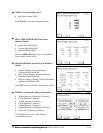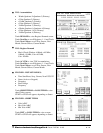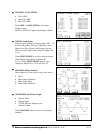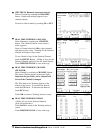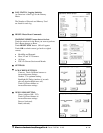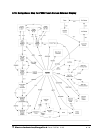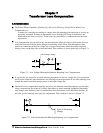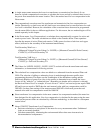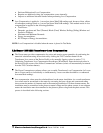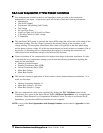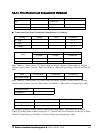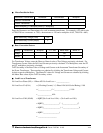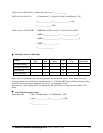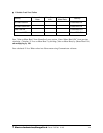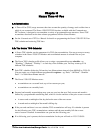
Electro Industries/GaugeTech
Doc # E107706 V1.25 7-2
Q
A single meter cannot measure the losses in a transformer or transmission line directly. It can
however, include computational corrections to calculate the losses and add or subtract those losses to
the power flow measured at the meter location. This is the method used for loss compensation in the
Nexus meter.
Q
The computational corrections used for transformer and transmission line loss compensation are
similar. Generically, no-load losses and full-load losses are evaluated and a correction factor for each
loss level is calculated. However, the calculation of the correction factors that must be programmed
into the meter differ for the two different applications. For this reason, the two methodologies will be
treated separately in this chapter.
Q
In the Nexus meter, Loss Compensation is a technique that computationally accounts for active and
reactive power losses. The meter calculations are based on the formulas below. These equations
describe the amount of active (Watts) and reactive (VARs) power lost due to both iron and copper
effects (reflected to the secondary of the instrument transformers).
Total Secondary Watt Loss =
(((Measured Voltage/Cal point Voltage)
2
x %LWFE) + ((Measured Current/Cal Point Current)
2
x %LWCU)) x Full-scale Secondary VA
Total Secondary VAR Loss =
(((Measured Voltage/Cal point Voltage)
4
x %LVFE) + ((Measured Current/Cal Point Current)
2
x %LVCU)) x Full-scale Secondary VA
Q
The Values for %LWFE, %LWCU, %LVFE, %LVCU are derived from the transformer and meter
information, as demonstrated in following sections.
Q
The calculated loss compensation values are added to or subtracted from the measured Watts and
VARs. The selection of adding or subtracting losses is made through the meter profile when
programming the meter. The meter uses the combination of the add/subtract setting and the
directional definition of power flow (also in the profile) to determine how to handle the losses.
Losses will be "added to" or "subtracted from" (depending on whether add or subtract is selected)
the Received Power flow. For example, if losses are set to "Add to" and received power equals 2000
kW and losses are equal to 20kW then the total metered value with loss compensation would be
2020 kW; for these same settings if the meter measured 2000 kW of delivered power the total
metered value with loss compensation would be 1980 kW.
Q
Since transformer loss compensation is the more common loss compensation method, the meter has
been designed for this application. Line loss compensation is calculated in the meter using the same
terms but the percent values are calculated by a different methodology as described in a subsequent
section below.
Q
Nexus 1250/1252 Transformer Loss Compensation:
• Performs calculations on each phase of the meter for every measurement taken. Unbalanced
loads are accurately handled.
• Calculates numerically, eliminating the environmental affects that cause inaccuracies in
electromechanical compensators.



